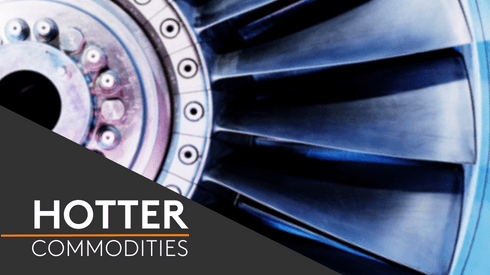Efforts to reduce greenhouse gas emissions produced by transportation have focused on the deployment of electric vehicles (EVs). But there is a snag. Based on current grid infrastructure, there will not be enough available power to support them.
Dave Daly, president of EV Edison, which provides EV charging solutions, said that while a lack of connected power is not yet a major concern, owing to the still-slow pace of vehicle electrification, that will change in the coming years.
Of the roughly 300 million vehicles in the US today, only about 2 million (less than 1%) of them are EVs. In the US alone, the target is for half of all new vehicles sold in 2030 to be zero-emissions vehicles, including battery electric, plug-in hybrid or fuel cell types. That means a huge increase in demand for metals and minerals such as lithium, nickel, cobalt and copper used to produce batteries, charging stations and vehicles, as well as the associated energy required.
“The biggest issue we face isn’t so much the EV chargers but the power supply to the chargers, the power infrastructure,” Daly told Fastmarkets’ Copper Seminar in New York in June.
“It’s a tremendous [grid] load that will need to be drawn, particularly when you get higher levels of EV penetration,” he said, adding that around $2 trillion of investment in grid infrastructure is required globally to aid energy transition.
The last mile
There are more hurdles to overcome. On a basic level, the problem does not lie in the transmission system, which moves electrical energy from power plants to substations. Nor does it lie in the distribution system – the poles and cables carrying electricity above and below ground from the transmission system to consumers, although that part of the network could do with some investment.
The real hitch is connecting the local distribution lines to EV chargers, a part of the system that Daly describes as “the last mile that is least invested in.” Typically, that part of the network has been run until it fails, at which point it is repaired. But, Daly noted, in a modern world, where homes are offices and schools require power, and vehicles are electric, the amount of resilience required for reliability in that ‘last mile’ is completely different.
“That’s where investment is needed. Right now, it’s a chicken-and-egg trade-off – we need to grow the number of EVs, but investment in the last mile needs to happen in parallel,” he told the seminar. An added complication is that the lead time at power utility companies for the transformers and switchgear needed to make that investment is around two years, hampering immediate progress.
Nevertheless, some initiatives are starting to solve some of these issues. One such scheme is the Interconnection Innovation e-Xchange, a new partnership funded by US President Joe Biden’s Bipartisan Infrastructure Law, which brings together grid operators, utilities, state and tribal governments, clean energy developers, energy justice organizations, and other stakeholders to connect more clean energy to the country’s power grid by solving the challenges.
Peak load
Battery storage technology has a key part to play in ensuring that homes and businesses can ultimately be powered by clean energy, but deploying it is complicated, given the way it will reshape the electricity load curve.
Around the world, current energy grids are typically built to handle peak domestic load around 5-6pm each day, when people return from work, school or other errands.
In the US, the load factor – which measures how much of the full capacity of the grid is used over the course of a 24-hour day through the year – is currently around 40%, meaning there is about 60% unused capacity, largely overnight. During that night-time period, it is envisaged that the grid would take advantage of quieter demand to charge grid-scale batteries to create energy storage, but the wires that connect the grid need to be able to cool down overnight or face a decline in available capacity the next day, meaning that the current system needs to be upgraded to cope with large-scale overnight battery charging for energy storage.
Battery technologies
The extent to which developments in EV technology will affect grid-scale batteries has yet to be determined. Lithium-ion batteries continue to be the type most widely used in energy storage, making up most of all new capacity being installed as the world moves toward decarbonization.
It is possible, industry experts say, that battery chemistries which become less attractive for EVs can be deployed at a lower cost for stationary applications on the grid.
According to George Kamiya, an analyst at the International Energy Agency (IEA), lithium-iron-phosphate batteries are being increasingly favored for grid-scale installations, particularly in China. These batteries are lower cost and have higher durability than nickel-manganese-cobalt chemistries, which dominate the EV market, he said.
“EV battery manufacturers aim to continually develop greater energy density to reduce upfront costs and increase EV range, but this has little effect on stationary applications, for which size and weight are secondary considerations,” Kamiya said.
“Therefore,” he added,” as supply chains advance to the next higher-performing blend or chemistry, technology that may become less attractive for EVs can be deployed at a lower cost for stationary applications on the grid.”
The advantages of energy storage are immense, and will work as a bridge to allow rapid EV charging when the number of EVs on the road increases, before eventually levelling off again at high penetration levels. Getting there is going to take some investment.
This is an article from the latest issue of the Metal Market Magazine. To read more articles from the latest issue click here.





